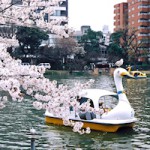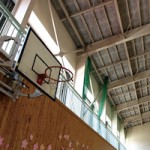The Keiyo D2 Mita store is a large one-stop shop for DIY, gardening and everyday supplies.…
The Expat's Guide to Japan
Everything you need to know about living and working in Tokyo & Yokohama
More results...
Monthly Archives: July 2015
Shimachu (Nakano Store)
A DIY shop near the station, selling kitchenware, furniture, DIY equipment and bicycles.…
Arisugawa-no-Miya Memorial Park
Arisugawa-no-Miya Memorial Park (有栖川宮記念公園), originally the urban villa of feudal lord Minonokami Nambu, is now a tranquil park located within central Tokyo. Surrounded by foreign embassies, and located behind Hiroo station, the park provides a wide variety of natural scenery,…
Chidorigafuchi, Kitanomaru Park
Hama-rikyu Gardens
Though it is rare to see fields carpeted in bright yellow blossoms in the middle of the city, the 300,000 nanohana plants in bloom in mid-March, against the background of Tokyo high-rise buildings.…
Inokashira Park
Outside of the center of the city, this park offers the same hanami experience with a little less crowding. There are a number of universities nearby, and so most hanami partiers will be student groups. There are facilities that rent…
Jindai Botanical Gardens
Japan’s first botanical garden, the are located about Jindai-ji Temple on the Musashi plain and house approximately 4,500 varieties of plants. The garden displays a flower show every month of seasonal blooms.…
Koganei Park
The second largest park in the Metropolitan Tokyo. Inside the park there is an Edo-Tokyo Open Air Architectural Museum where you can enjoy restored buildings and scenes of daily life from Edo-period to post-WWII period.…
Koishikawa Botanical Garden
The University of Tokyo Graduate School of Science’s botanical garden in Tokyo is one of the oldest in Japan. Used for research, these gardens are open to the public and have large collections of flora, including a 300 year forest…
Mizumoto Park
The largest park with water landscapes within municipal Tokyo. Features many species of plants and trees which grow well near water and a sanctuary for wild birds.…
Mukoujima-Hyakkaen Gardens
A flower garden established in the early 19th century, it was originally designed to house a variety of Ume plum trees but has since come to accommodate a wide variety of annually blooming flora.…
ShinjukuGyoen National Garden
One of Tokyo’s foremost parks, the , former residence of the daimyo noble Naito family, is one of the most popular places in Tokyo for cherry blossom viewing. Aside from the cherry trees, the park has over 20,000 varieties of…
Showa Kinen Park
The largest park in Tokyo area (165.3 hectares / 408.4 acres). So many areas to explore, including the entire 14km of cycling course, many sporting activities, outdoor barbeque, and variety of kids playground equipments such as giant bouncing domes.…
Todoroki Gorge
One of Tokyo’s more idyllic places, this stretch of green is surrounded by trees and follows the course of a river. Quiet and featuring one or two shrines, it’s perfect for a quiet stroll to escape the hustle and bustle…
Rinshi no Mori Park
Beginning life as a nursery and forestry research station, this park was opened to the public when the station was moved to Tsukuba. Located in Shimomeguro, some of its trees can be traced back hundreds of years and provide excellent…
Ueno Park
Yoyogi Park
This lush and green park offers the grandest panorama of Tokyo’s sky and is also famous for its cherry blossom viewing. The area was first used as a US army housing site and then as the grounds for the Olympic…


